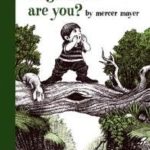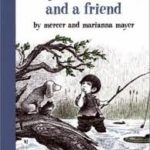 Language samples are BIG BANG for your time-buck, and we will show you how to do a language sample. And, let’s be honest, we think that we do not have enough time. However, language sampling can be easy and pulls together all aspects of language in a functional way.
Language samples are BIG BANG for your time-buck, and we will show you how to do a language sample. And, let’s be honest, we think that we do not have enough time. However, language sampling can be easy and pulls together all aspects of language in a functional way.
With language sampling, we can get the information we need fast. They are PACKED full of information:
- There was a boy and a frog [ character id]
- He jumped inside the box [past tense / preposition use/ object name ]
- They ran behind the trees [ pronoun / past tense / preposition / article / plural use]
4 tips on how to obtain a language sample:
1. Use your phone or computer to record the sample.
Audacity is free downloadable program that records your language sample.
2. As your student/client is speaking, start to type up the sample.
You may be able to type up your entire sample in real time. For clients who are more verbose, you might be typing every third or fourth sentence. You might surprise yourself and have enough information with just the utterances typed. In many cases, 25-50 utterances can give you sufficient information. Try your hand at typing up this sample in real time:
3. Use a wordless picture book for a narrative sample.
We like Mercer Mayer’s Frog, Where Are You? You tell the story and the child listens.
| E: Examiner C: ChildE: Tell us the story.C: The frog was (in the X) in the jar.C: And he wa* hoppin to the jar.C: And he came out.C: And he put the jar in the jars.C: Up! Push the froggie.C: And smash the froggie.C: Frog, where are you?C: (And and he his mother) he was with* his froggie babies (froggies). | Based on this, I would say that she demonstrates the following language skills:1. Subject-Verb-Object2. Plurality3. Prepositional phrases4. Various verb tenses (past, present progressive) |
4. Easily analyze your language sample.
So, now you have the language sample, what do you do? We can help you here, too. You need to analyze the macro (big picture) and micro (details of a story). We have created this cheat sheet of the different aspects of language and did research on when they are expected to develop. Assessment of Fictional Narratives
So, here’s to effective language sampling!
Detailed case study and example of language sampling
Let me conclude by adding some text from an evaluation that I just wrote. You can see the richness of information about the child’s language in an easy snapshot.
Josepi, Age 7;2 Qualified for Speech Services with an Expressive and Receptive Impairment
Conversational Language Sample
Informal observations indicated that Josepi’s conversational language skills are stronger in Spanish than English. The examiner asked Josepi about what he does at home and who he plays with, and what he received as a gift on a recent holiday. He was able to give basic information in response to “Wh” questions (e.g., who, what, where) but his utterances were limited grammatically and Josepi did not initiate any of the conversation.
| I have it the move it robot yellow. I opened the present the robot. Press the body button. Now the move (marching in room)[what else did you get?]My nanera. The hobbit. The man De de de de happ out here This[what did your brothers and sisters get?] | My boy little have it the RRRRRRR (driving sound) My big boy has it the the this one (drawing)Have it the down up (out of chair marching?)[did you have a Christmas tree”] Green tree have it green tree beautiful [do you have a dog?] No, no have it. |
Story-telling Exercise (TELL & RETELL)
Josepi was asked to tell a story after looking at pictures in a wordless picture book.
An example of Josepi’s stories in Spanish and English are presented here, followed by an explanation:
| Story tell without an example Porque hacer es.Eso se taparStop this ranaDe hechoribbit ribbitBong bongOh no ¿dónde está rana?Rana ¿dónde está?Tú estabas allíRana!Woof Woof WoofOy no!¿Rana dónde estás?¿Rana allí estabas?Ew woof Woof Woof Woof… | Story retell after hearing an example niño de niño perro ranaRana vaya stapa (escaper)Rana salió de allíNiño se despertó ya¿Allí estaba rana? No¿Rana dónde estás rana?Perro ya está abajoEl perro x eso.¿Rana dónde está?¿Rana allí estabas?Achim? (biting) ouchAhorita está eso.Eso ya cayó, miel allí adentroEl perro woof woof woof.X x perros… |
| English story tell without an example Right here the boy the dog the frog The boy the sleeping. Here. | The (hi) him boy. The where the frog coming for? Frog, are you here? No.Frog, where are you? Woof woof woof. |
Narrative Summary
Three stories were elicited from Josepi:
- English: without an example
- Spanish: without an example
- Spanish: with an example
Josepi’s English language sample could be described as naming the characters and using gestures and sound effects to tell the story. His Spanish language samples were more linguistically rich and are considered a truer measure of his language abilities. Josepi’s language sample in English was smaller, less complex, and contained more grammatical errors. Some of the errors are typical of Spanish-influenced English but others were not and are indicative of language impairment.
In Spanish, Josepi was asked to tell a story without a model and at a different time tell a story with a model. There was considerable language growth between the two language samples (tell and retell), which indicates that Josepi benefits greatly from being able to see/hear an example before he is expected to complete a task.
Josepi produced utterances of 1-6 words in Spanish. His utterances included the characters of the story and some actions (sleeping). The story was told from the perspective of the main character as Josepi spoke as though he were the boy. Much of the story contained sound effects and naming of the characters. He mentioned the place (in the water) on a few occasions but typically did not mention the place or used non-specific words (there/here). Without the pictures it would have been difficult to understand what Josepi was talking about.
The story that he generated included verbs in present tense but did not include past or future. He did use certain verbs (cayó/fell) that occur more routinely in the past tense than the present. He did not use adjectives or many conjunctions (and). Without the known context of the book, much of the story would have been difficult to understand due to a lack of content, reduced use of pronouns and articles, and reliance on carrier phrase such as “and…” While his story included the action of many pictures, the story was not unified into a cohesive narrative. He did not use cohesive elements (“and then) to link the story together.
Grammatically, Josepi struggled to use complete sentences that were grammatically and syntactically correct. He had difficulty including articles and pronouns consistently. Additional syntactic errors included inclusion of extra articles, lack of plurals, missing aux-verb…, use of non-informative naming (it, that, everywhere), and using a different word order.
Rich Information
So you can see that with this relatively short language sample, we gain a wealth of information about Josepi’s expressive language skills. By gathering a “tell” and a “retell” we gain insight about successful strategies for intervention and classroom support. We didn’t go into great detail in this post about differentiating typical language influence errors from atypical errors. If you want more details about this process, check out our Difference vs. Disorder: Language presentation slides on Slideshare or our continuing education course by the same title.
Click the image to view the course.








Howdy! This is my first visit to your blog! We are a team of volunteers and starting a new
project in a community in the same niche. Your blog provided
us valuable information to work on. You have done a extraordinary job!
Hey! I love this blog and the pdf about assessing fictional narratives is amazing. I’m excited to use this as a resource during evaluations! Thanks!
Hi, the two links don’t seem to work: Audacity and Frog Where Are You?
This looks like a simplified version of SALT. We helped collect the SD data a few years back. How does this relate?
Thanks!
Hi Claudia,
Thank you for the response and note about the links. I put in new links but they always seem to change. In the future you can Google Audacity and look for the blue headphones symbol and download it to your computer. Likewise, Frog Where Are You? and Mercer Meyer’s other frog books can be found on Amazon if this link goes dormant again.
We all used SALT a lot at the University and were involved in several data collection projects. The data set they have is great and I was at the SALT presentation at ASHA (2016) and learned that they just added a Spanish-only group from Mexico so that you can now do a true analysis of Spanish-only, English-only, bilingual, or all of the above.
If you helped collect data then you know that language samples are hugely powerful. All of our evals include them. Truth be told though, much of our field finds the process cumbersome and we wrote this post to introduce people to the “hows” of language sampling so that we can get the benefit of the sample without the perceived burden. Tons of non-native English-speakers continue to get pulled into special education due to shallow formal evaluations. We truly believe that the language samples are the way out.
Hola, he completado de analizar tú comentario y me a parecido muy sugestivo tu aportación. A partir de hoy voy a beneficiarme de todos
tus indicaciones y los intentaré seguir en el futuro. Te doy la enhorabuena por tu web.
Gracias por sus amables comentarios. Me alegro de que encuentre nuestro blog útil.
This article is just what I needed to read this morning as I head into work to complete two evaluations. What helped me the most was seeing an example of how to convey through the written report, in specific but common language, an explanation of what was found by conducting the language sample.
I don’t find the process of eliciting or transcribing a language sample as difficult as I do the next part, which is what to do with it, how to interpret it, and how to express my findings in a report that’s readable by all members of the IEP team. Much like the child in the article’s example, I feel so much more competent after being provided with an example with which to internalize as my own thought process while making sure not to directly copy, although, I’ve learned that using boiler-plate canned phrases is no reason to feel guilty–rather, it allows one to spend more time with things that have more impact.
Sorry for the long-winded post, but I just wanted to express my gratitude for this website/resource.
Not long-winded at all Trevor. This stuff is complex but really gives us amazing information with the smallest amount of effort. Your comments will galvanize others.
Scott